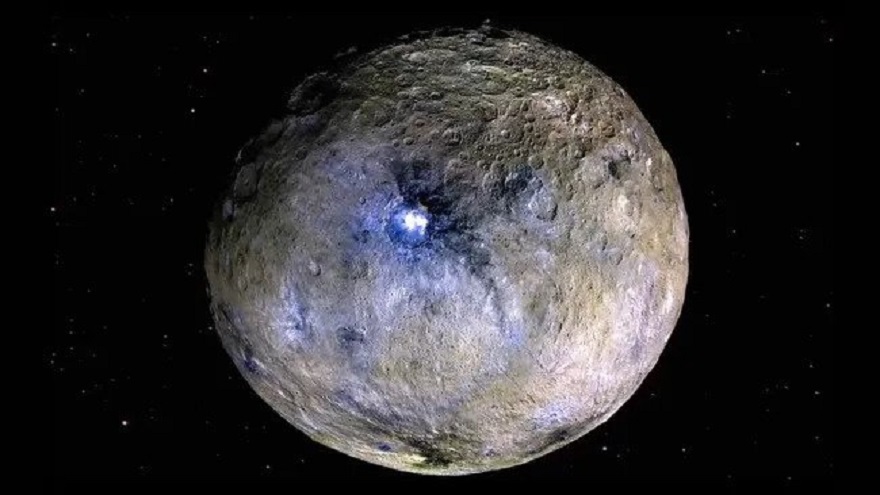Once upon a time, a meteorite impact punched a hole in a reservoir with organic compounds on the dwarf planet Ceres. Recently, scientists conducted a series of experiments, found out exactly how this happened, and established that they should look for alien life there.

Organic matter on Ceres
On October 17, a report was presented at a meeting of the American Geological Society. The authors of the report claim that the probability of finding life on Ceres may be much higher than previously thought. This celestial body is the largest in the main asteroid belt.
The dwarf planet Ceres was explored by the Dawn spacecraft a few years ago. Data obtained in 2017 showed that there were organic compounds near a large crater with a diameter of 51.5 km. Scientists have been trying for a long time to establish where these molecules came from. In the end, they came to the conclusion that they were formed right there.
“We are finding that organics may be more widespread than first reported and that they seem to be resilient to impacts with Ceres-like conditions,” said Juan Rizos, an astrophysicist at the Institute of Instituto de Astrofisica de Andalucia in Spain and co-author of the new study.
What Ceres has experienced in the past
Scientists have suggested that the appearance of organic matter on Ceres is somehow connected with collisions that it has experienced in the past. They used the Vertical Gun Range test facility located at NASA’s Ames Vertical Gun Range in California to do this. It is used to simulate space collisions. Research on it helped to find out what collisions in the past were like.
In addition, the researchers combined data from the Dawn camera and spectrometer. With all this data, they can understand in detail how the content of organic molecules correlates with the traces of meteorite impacts. Scientists have found that there are most of them near the oldest craters on the surface of Ceres.
They don’t really understand the reasons for this yet, but they assume that in the past, a sufficiently large meteorite could have punched a hole in an internal reservoir full of water and hydrocarbons. Therefore, there should be a lot of these compounds on the surface of Ceres.
This conclusion is especially interesting given that the mission to this celestial body is on the list of NASA scientists’ priorities for the next decade. It is quite possible that the samples it will return from Ceres will contain not only organic molecules but also extraterrestrial life.
According to www.space.com
Follow us on Twitter to get the most interesting space news in time
https://twitter.com/ust_magazine
